Australian households have suffered one of the largest declines in real disposable incomes in the developed world.
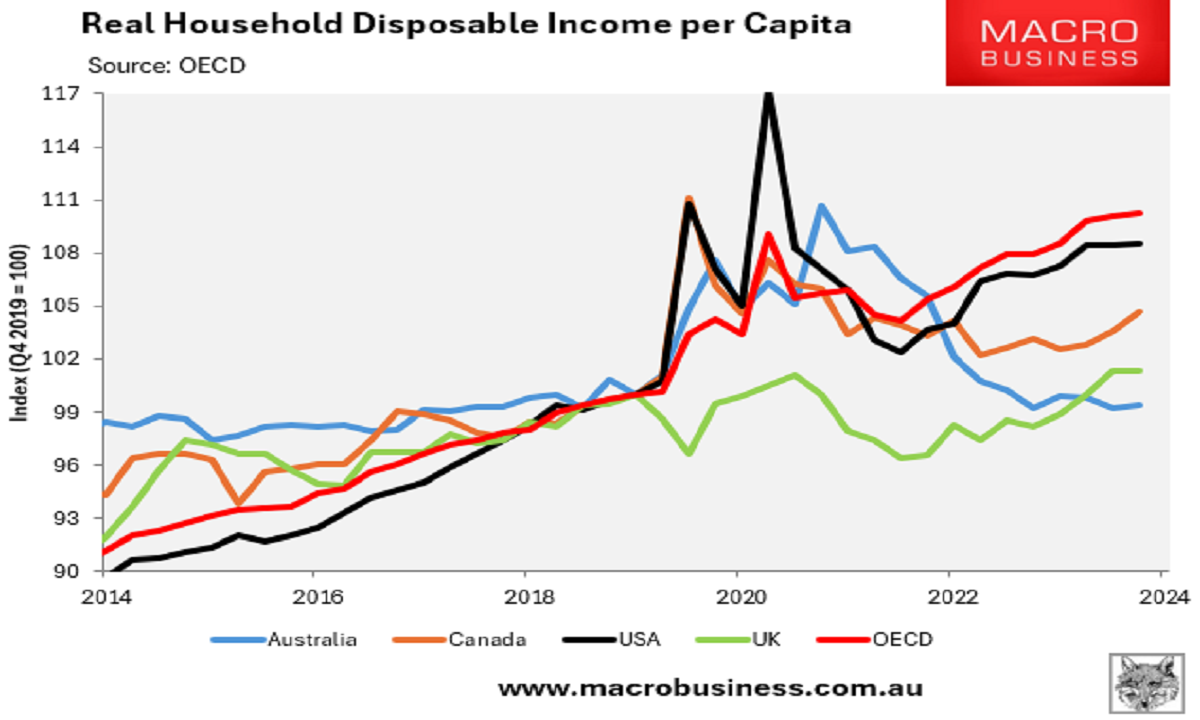
The Q4 2024 national accounts from the Australian Bureau of Statistics (ABS) showed that real per capita household disposable income had declined by around 8% from its mid-2022 peak, the sharpest decline on record.
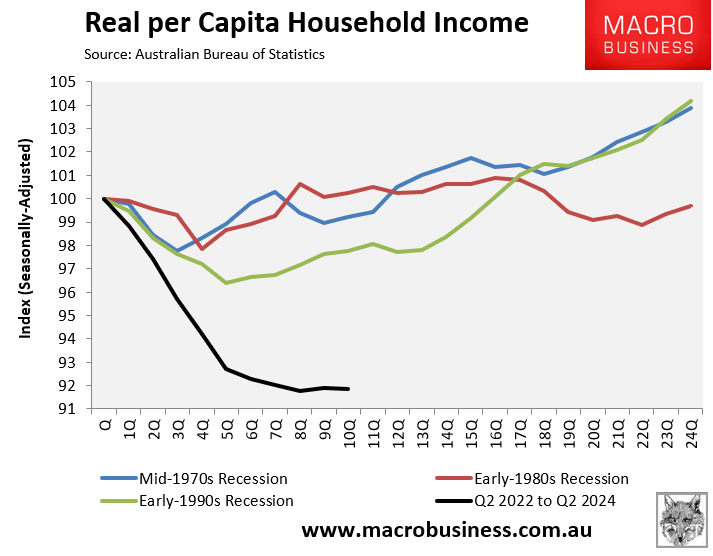
The ABS released its cost of living indices for Q1 2025, which showed that working Australians continue to be hard hit.
As the following chart from Greg Jericho shows, working Australian households experienced a 3.4% rise in their cost of living in the year to March 2025, well above the 2.4% rise in CPI inflation.
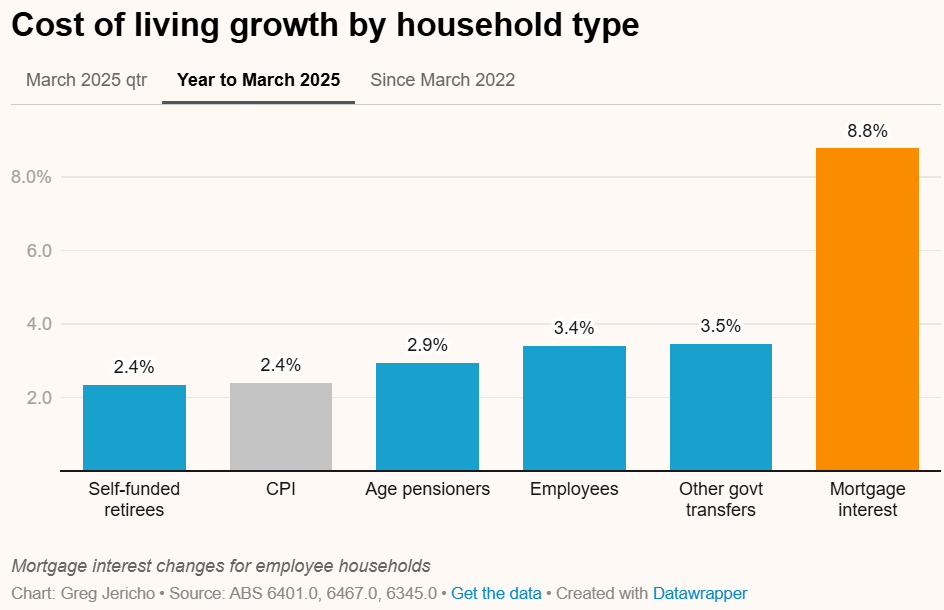
Since Q1 2022, Jericho shows that employee household cost of living surged by 20.7%, easily beating the 13.6% rise in CPI inflation over that period.
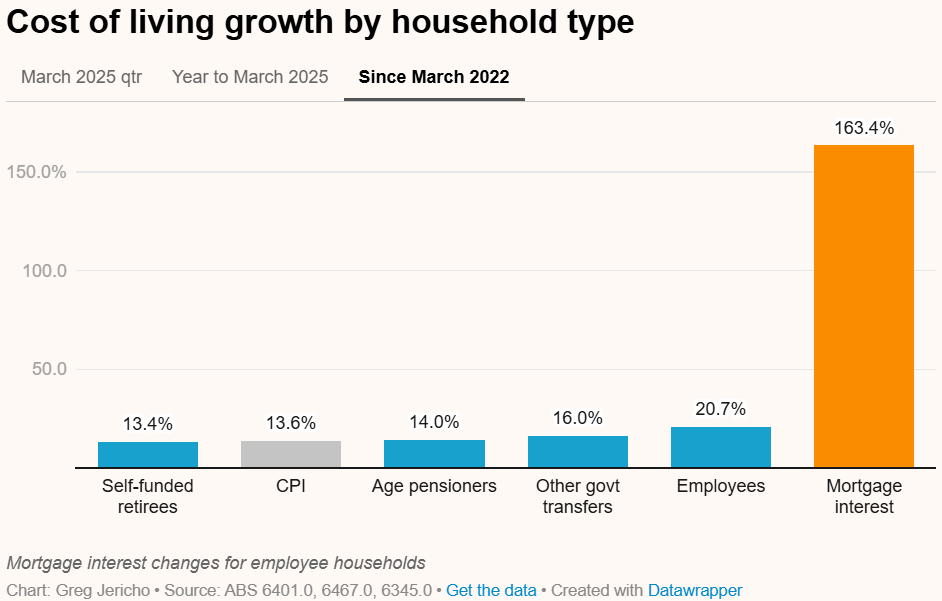
Out of all household types, employee households experienced the largest increase in cost of living over this period.
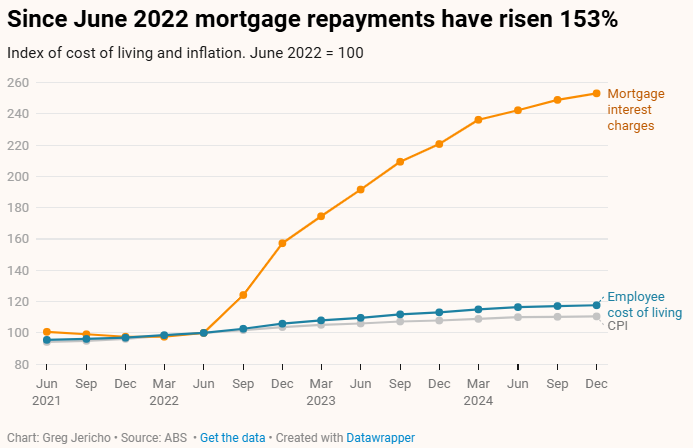
The main drag on employee cost of living has come from the surge in mortgage payments owing to the Reserve Bank of Australia’s (RBA) interest rate rises.
As shown by Jericho below, nearly half of the 20.7% increase in employee household cost of living has come from rising mortgage payments.
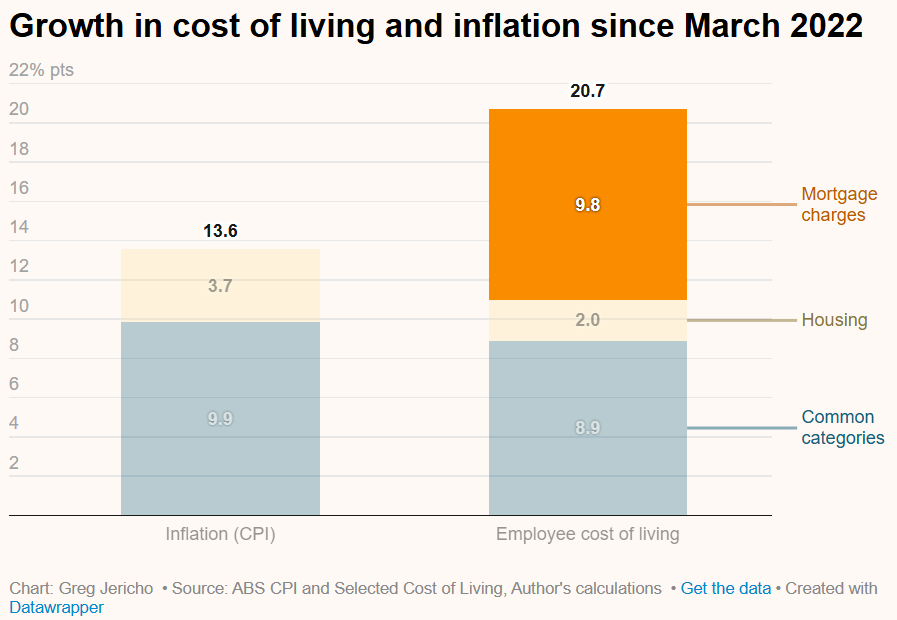
Data from the Bank for International Settlements shows that Australian households have experienced one of the largest rises in debt repayments in the world.
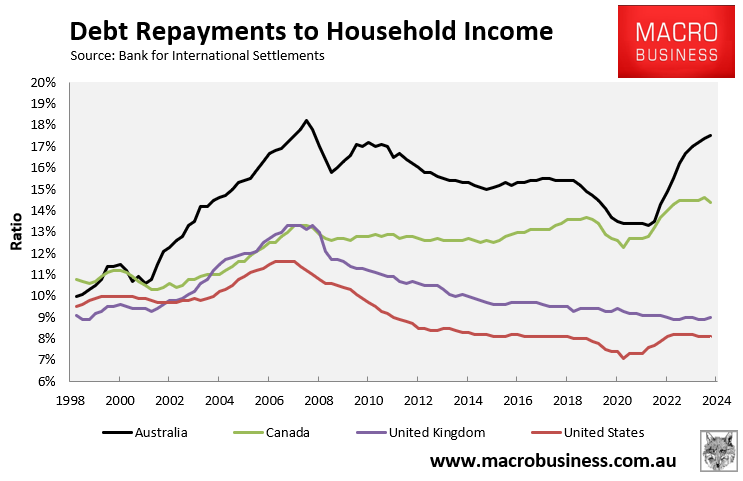
The good news is that the RBA is tipped to cut the official cash rate another 1.0% by the end of 2025.
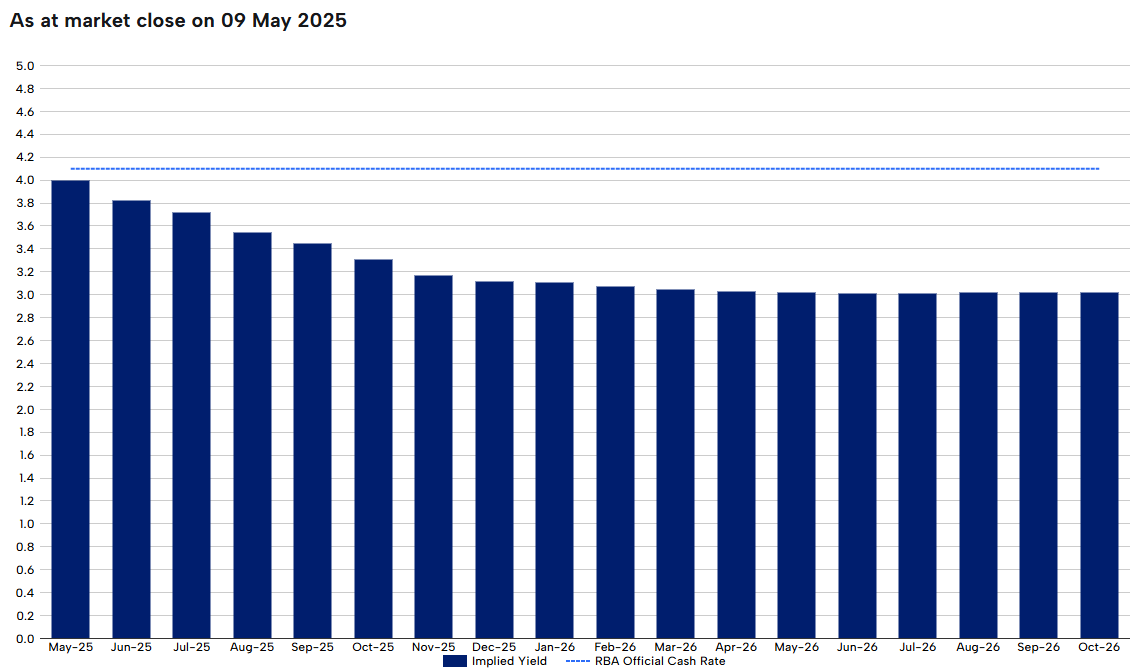
If these cuts come to fruition, they will reduce mortgage repayments and ease the cost of living for employee households.

